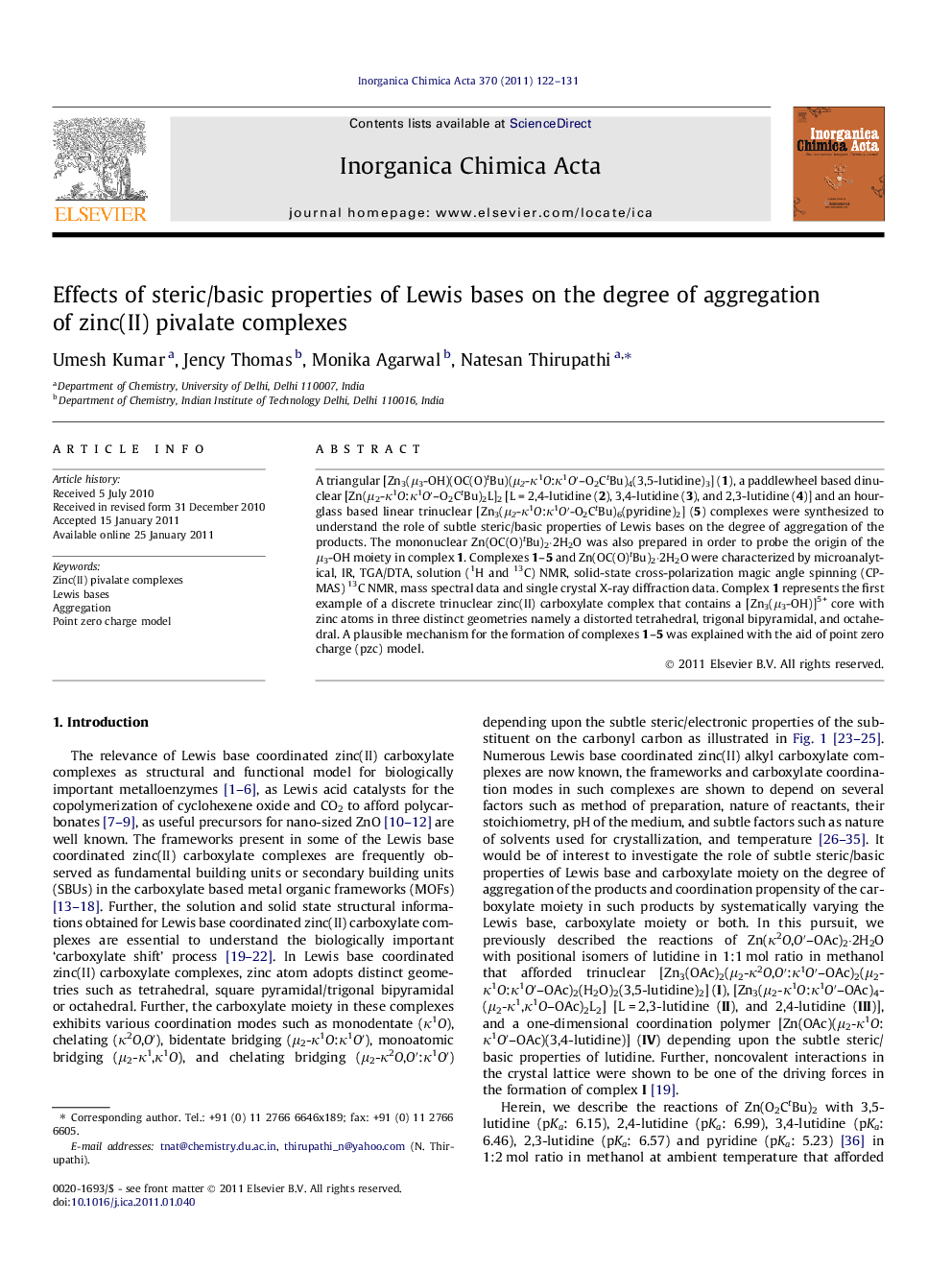| کد مقاله | کد نشریه | سال انتشار | مقاله انگلیسی | نسخه تمام متن |
|---|---|---|---|---|
| 1306268 | 1499208 | 2011 | 10 صفحه PDF | دانلود رایگان |

A triangular [Zn3(μ3-OH)(OC(O)tBu)(μ2-κ1O:κ1O′–O2CtBu)4(3,5-lutidine)3] (1), a paddlewheel based dinuclear [Zn(μ2-κ1O:κ1O′–O2CtBu)2L]2 [L = 2,4-lutidine (2), 3,4-lutidine (3), and 2,3-lutidine (4)] and an hourglass based linear trinuclear [Zn3(μ2-κ1O:κ1O′-O2CtBu)6(pyridine)2] (5) complexes were synthesized to understand the role of subtle steric/basic properties of Lewis bases on the degree of aggregation of the products. The mononuclear Zn(OC(O)tBu)2·2H2O was also prepared in order to probe the origin of the μ3-OH moiety in complex 1. Complexes 1–5 and Zn(OC(O)tBu)2·2H2O were characterized by microanalytical, IR, TGA/DTA, solution (1H and 13C) NMR, solid-state cross-polarization magic angle spinning (CP-MAS) 13C NMR, mass spectral data and single crystal X-ray diffraction data. Complex 1 represents the first example of a discrete trinuclear zinc(II) carboxylate complex that contains a [Zn3(μ3-OH)]5+ core with zinc atoms in three distinct geometries namely a distorted tetrahedral, trigonal bipyramidal, and octahedral. A plausible mechanism for the formation of complexes 1–5 was explained with the aid of point zero charge (pzc) model.
Three in one! Zinc(II) atoms in discrete triangular [Zn3(μ3-OH)(OC(O)tBu) (μ2-K1O:K1O′–O2CtBu)4(3,5-lutidine)3] (1), possess three types of geometries namely distorted tetrahedral, trigonal bipyramidal and octahedral and this unique feature is ascribed to the coordination flexibility of both Zn(II) due to d10 electronic configuration and the pivalate moiety.Figure optionsDownload as PowerPoint slideResearch highlights
► Triangular trinuclear, paddlewheel dinuclear, and hourglass linear trinuclear zinc(II) pivalate complexes.
► [Zn3(μ3-OH)]5+ core with zinc atoms in three distinct geometries.
► Zn(OC(O)tBu)2·2H2O.
► CP-MAS 13C NMR is handy to distinguish the pivalate coordination modes.
► Plausible mechanism with the aid of point zero charge (pzc) model.
Journal: Inorganica Chimica Acta - Volume 370, Issue 1, 15 May 2011, Pages 122–131